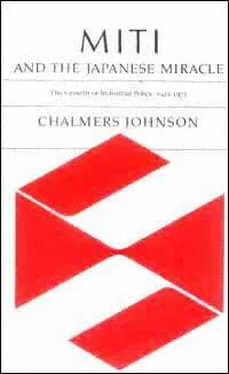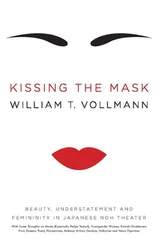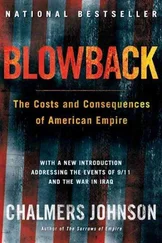Chalmers Johnson - MITI and the Japanese miracle
Здесь есть возможность читать онлайн «Chalmers Johnson - MITI and the Japanese miracle» весь текст электронной книги совершенно бесплатно (целиком полную версию без сокращений). В некоторых случаях можно слушать аудио, скачать через торрент в формате fb2 и присутствует краткое содержание. Год выпуска: 2007, Издательство: Stanford University Press, Жанр: Старинная литература, на английском языке. Описание произведения, (предисловие) а так же отзывы посетителей доступны на портале библиотеки ЛибКат.
- Название:MITI and the Japanese miracle
- Автор:
- Издательство:Stanford University Press
- Жанр:
- Год:2007
- ISBN:нет данных
- Рейтинг книги:3 / 5. Голосов: 1
-
Избранное:Добавить в избранное
- Отзывы:
-
Ваша оценка:
- 60
- 1
- 2
- 3
- 4
- 5
MITI and the Japanese miracle: краткое содержание, описание и аннотация
Предлагаем к чтению аннотацию, описание, краткое содержание или предисловие (зависит от того, что написал сам автор книги «MITI and the Japanese miracle»). Если вы не нашли необходимую информацию о книге — напишите в комментариях, мы постараемся отыскать её.
MITI and the Japanese miracle — читать онлайн бесплатно полную книгу (весь текст) целиком
Ниже представлен текст книги, разбитый по страницам. Система сохранения места последней прочитанной страницы, позволяет с удобством читать онлайн бесплатно книгу «MITI and the Japanese miracle», без необходимости каждый раз заново искать на чём Вы остановились. Поставьте закладку, и сможете в любой момент перейти на страницу, на которой закончили чтение.
Интервал:
Закладка:
72
94
Agriculture, forestry, fishing
97
100
Exports (including SCAP purchases)
15
35
Imports
30
39
Private plant and equipment investment
70
82
Per capita real national income
69
80
SOURCE
: Japan Development Bank,
Nihon kaihatsu
ginko
*
10-nen shi
(A ten-year history of the Japan Development Bank), Tokyo, 1963, p. 18.
food, were being supplied by the United States. In 1949 Joseph Dodge contended that U.S. aid was one of the two "stilts" on which Japan's rigged economy rested; the other was RFB financing. According to SCAP, "The realization of a self-supporting status [for Japan] by 1953 requires a 700 percent increase in the volume of exports over 1948 with no more than a 120 percent increase in the volume of imports."
54
In 1949 Japanese exports were running at about $500 million per annum and imports at $900 million, with the difference being covered by disbursements from the U.S. Treasury.
According to the terms of the Potsdam Declaration, which Japan had accepted at its surrender, SCAP exercised complete control over all exports or imports of goods and services, as well as all foreign exchange and financial transactions. The little Japanese foreign trade that SCAP allowed was conducted government to government until September 1947, when private foreigners were first allowed to participate. Private Japanese could not engage in international commerce until December 1949.
On October 9, 1945, SCAP had directed the Japanese government to create a single governmental agency to account for and distribute the goods that SCAP itself imported into Japan and to receive and transfer to SCAP products manufactured by the Japanese for export. This order led to the creation of the Board of Trade (BOT; Boeki* Cho*, established by Imperial ordinance 703 of December 13, 1945) as an external bureau of MCI.
55
The BOT was an unusual institution. The fact that it was even tenuously attached to MCI rather than to the Foreign Ministrywhich SCAP would have preferred, since U.S. practice is to give the Department of State final authority over American tradewas due to some
Page 188
fast action by Shiina and his successor as vice-minister after October 12, 1945, Toyoda Masataka. When MCI was recreated in August 1945, Shiina had thoughtfully set up a Trade Section (Koeki-ka *) in the Commercial Bureau, even though it did not have anything to do. Its head was Matsuo Taiichiro*, class of 1934 and one of the few MCI foreign trade specialists. During the Pacific War he worked as chief of the Import Section in the Greater East Asia Ministry, and in September 1956 he became the first genuine MITI bureaucrat to head the International Trade Bureau after the ministry finally freed itself of dominance by Foreign Office transferees. After retirement in 1960 Matsuo headed the New York office of the Marubeni Trading Company, and during the 1970's he became president of Marubeni. Arguing that MCI already had the nucleus of the organization SCAP wanted, Toyoda barely managed to beat back the claims of the Foreign Ministry. He also recalled years later that this MCI victory had occurred early in the occupation, before SCAP knew the lay of the land very well.
56
Even though the BOT was attached to MCI, the ministry had very little influence over it. BOT staff members from MCI were heavily outnumbered by Foreign Office officials who spoke Englishan indispensable requirement, since the BOT's main business was with SCAPand who needed assignments during the period when Japan had no other foreign relations. Until April 1947 the BOT conducted its domestic business through some 78 "semigovernmental" trade associations of exporters and importers. These associations were straight postwar continuations of the old control associations, although under new names; when SCAP realized what was going on, it banned any further use of the cartels. They were then replaced by four fully governmental corporations (kodan*), one each for minerals and industrial products, textiles, raw materials, and foodstuffs (see the Foreign Trade Public Corporations Law, number 58 of April 14, 1947). The BOT also controlled the Foreign Trade Fund, which concentrated all U.S. aid receipts and foreign exchange earned from exports into a single account to be used to buy strategic imports.
During 1947 and 1948, when the priority production system was in full operation, the ESB set basic trade policy and drew up a foreign exchange budget; the BOT in turn kept the accounts for the fund and supervised the kodan, whose fixed capital was supplied by the government and whose working capital was obtained by loans from the BOT's Foreign Trade Fund. The kodan actually purchased goods for export from domestic producers and sold them to the BOT, and they received consignments of SCAP imports from the BOT, which they in turn sold to consumers. Before April 1949 SCAP and the BOT also
Page 189
subsidized these transactions by maintaining an exchange rate between the dollar and the yen of US$1 = ¥130 for imports and US$1 = ¥330 (or ¥500, depending on the product) for exports.
57
Imports were sold in Japan at prices fixed in accordance with the ESB's supply-and-demand plans.
During the autumn of 1948 both SCAP and the Japanese recognized that they had to make some fundamental changes in the priority production system and in the state trading operations of the BOT. On October 15, 1948, the Ashida cabinet resignedthe prime minister himself had been arrested in the Showa* Denko* scandal over the misuse of RFB fundsand Yoshida returned to power. SCAP was now determined to stop the so-called RFB inflation, for two reasons in particular. First, beginning in July 1948, in order to increase Japanese imports and thereby try to rehabilitate the economy, SCAP had started to draw on two new accounts of U.S.-appropriated aid fundsthe so-called GARIOA and EROA ("Government Appropriations for Relief in Occupied Areas" and "Economic Rehabilitation of Occupied Areas")and it could not afford to see these politically sensitive funds consumed by the fires of inflation. Second, in December 1948 Washington unequivocally ordered SCAP to make the quick attainment of Japanese economic self-sufficiency its primary objective. In order to do this, trade had to be increased, which in turn required the establishment of a fixed commercial exchange rate for the yen, and this could not be accomplished without halting inflation. The world was changing: the Cold War had begun, the communist revolution in China was nearing its denouement, and the United States now saw Japan as a strategic territory of critical importance to its own security and not just as an object for political reform policies that had grown out of the ideological confrontations of World War II.
On the Japanese side a group of planners within the ESB led by Inaba Hidezo* drafted a five-year plan for Japan's economic reconstruction. It called for investment in heavy and chemical industries as the best way to increase the value of exports and to end price subsidies. Yoshida eventually disowned this plan, not because he disagreed with its contents (it is very similar to the plans MITI actually implemented during the 1950's) but because he believed that planning was synonymous with socialism.
58
Influenced by his own background and several of his closest associates, Yoshida felt that the best medicine for the Japanese economy would be to open it up to the world economy and to the discipline of international competition.
The most important of Yoshida's advisers during this period was Shirasu Jiro* (b. 1902). A graduate of England's Cambridge University,
Page 190
Shirasu was the son-in-law of Kabayama Aisuke, the titled (count), American-educated Satsuma clansman of Yoshida's father-in-law, Makino Nobuaki. Makino in turn was the second son of the Meiji oligarch Okubo * Toshimichi and, like Kabayama, also a graduate of an American university. Yoshida and Shirasu had become friends during the 1930's in London, where Yoshida was serving as Japanese ambassador and Shirasu was the manager of the English branch of the Imperial Fisheries Corporation. Linked by family background, education, and overseas experience, Yoshida and Shirasu continued their affiliation after the war. Yoshida appointed Shirasu first as deputy director of the bureau for liaison with SCAP and then as deputy director of the ESB in his first cabinet. Shirasu also participated in many important negotiations, including those with General Whitney over the new constitution and, as a consultant, in those conducted by the Japanese delegation at the San Francisco Peace Conference. On December 1, 1948, Yoshida appointed Shirasu director-general of the Board of Trade.
Читать дальшеИнтервал:
Закладка:
Похожие книги на «MITI and the Japanese miracle»
Представляем Вашему вниманию похожие книги на «MITI and the Japanese miracle» списком для выбора. Мы отобрали схожую по названию и смыслу литературу в надежде предоставить читателям больше вариантов отыскать новые, интересные, ещё непрочитанные произведения.
Обсуждение, отзывы о книге «MITI and the Japanese miracle» и просто собственные мнения читателей. Оставьте ваши комментарии, напишите, что Вы думаете о произведении, его смысле или главных героях. Укажите что конкретно понравилось, а что нет, и почему Вы так считаете.












